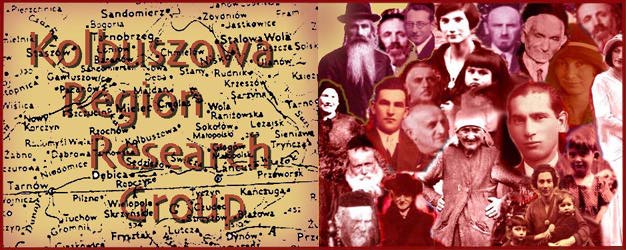


BRZOSTEK REDISCOVERS ITS JEWISH PAST
Submitted by Connie Webber
First published in the Jewish Press
The mayor of Brzostek, a Galician shtetl to the east of Tarnow and not far from Pilzno, has recently agreed to restore the memory of the Jews to his town.The Jewish cemetery is to be fenced and a monument erected there, and an additionl plaque in memory of the Jews who used to live there is to be unveiled in the town centre. The plaque will be unveiled and the cemetery rededicated in a ceremony to take place on Sunday 14 June 2009.
Brzostek is not particularly well known in today's Jewish world. It had no famous rabbis and no famous Zionist leaders. In fact, there was no established Jewish community there at all until the middle of the nineteenth century, so the Jewish history of the town was very short-lived by Polish Jewish standards. But after that there was a Jewish community, and a small shul and a cemetery, and there was a rabbi and shopkeepers and teachers and housewives and craftsmen and all the other people who go to make up a community, adults and children. Then, in 1942, the Germans brought the Jewish history of Brzostek to an end. The Jews who lived in the town were murdered, mostly shot to death in the nearby Kolaczyce forest or gassed in the Belzec death camp, but also in some in other, unknown locations. All that was left was the shul, the cemetery, and a street called Ulica Zydowska---Jewish Street---leading from the main square to the synagogue.
After the war, the synagogue was converted to other uses. Nothing is left to show that it was a synagogue, but the local people remember. No stones remain in the cemetery and there is no fence, but no one ploughs there, no one grazes cattle there. The local people remember.
The Nazis have gone, the Communists have gone. Polandís future is in the European Union, and as part of that future it is rediscovering its past. So when Professor Jonathan Webber, who has been doing research in Galicia and teaching in Krakow since 1988, came to the town as descendants of a Brzostek Jewish family who had left the town in 1876, and said that the family wanted to fence and rededicate the Jewish cemetery and put up a plaque in memory of the Jews, the town agreed. And when he said we wanted a civic ceremony for the unveiling and the rededication ceremony, not only with rabbis and a cantor but with the priest and the mayor and town council and the mayors of the surrounding towns, they agreed. They had only one condition: that the ceremony should take place before the end of the school year, so that the children of the town could participate. So while the fence is going up, the children of Brzostek are learning Yiddish songs. Their teachers are taking them to Krakow so they can see what synagogues look like and what Jewish gravestones look like, and visit the Jewish Museum. And on Sunday 14 June, they will meet Jews, descendants of people who once lived in their town.
Meanwhile, the local history enthusiasts of the town have been busy. Records of Jewish burials have been found. Fragments of some thirty tombstones, and even some whole tombstones, have been found and will be returned to the cemetery. Photographs of Jews have been found, and the people in them identified. A small exhibition of the Jewish history of Brzostek is being organized by the town, and an exhibition of magnificent papercuts on Jewish themes by the acclaimed Polish artist Marta Golab whose own family come from the town is to be hosted in the town. Brzostek is rediscovering its Jewish past.
© Copyright 2016 Kolbuszowa Region Research Group. All rights reserved.